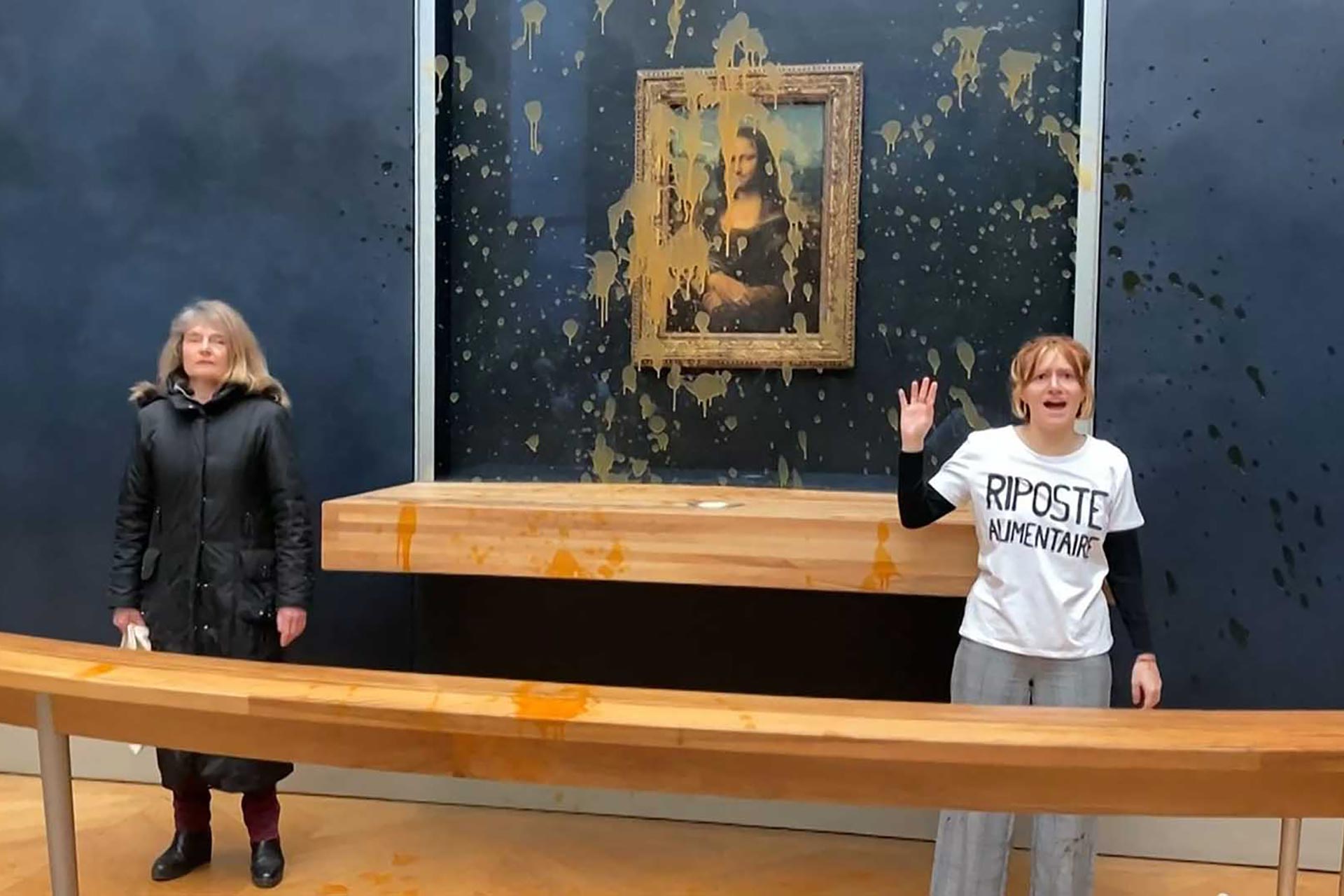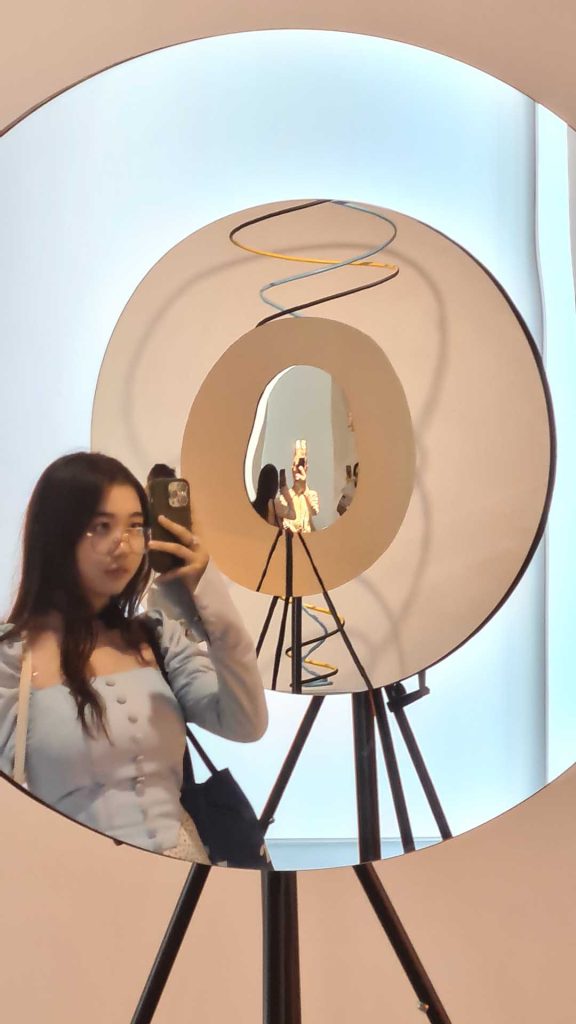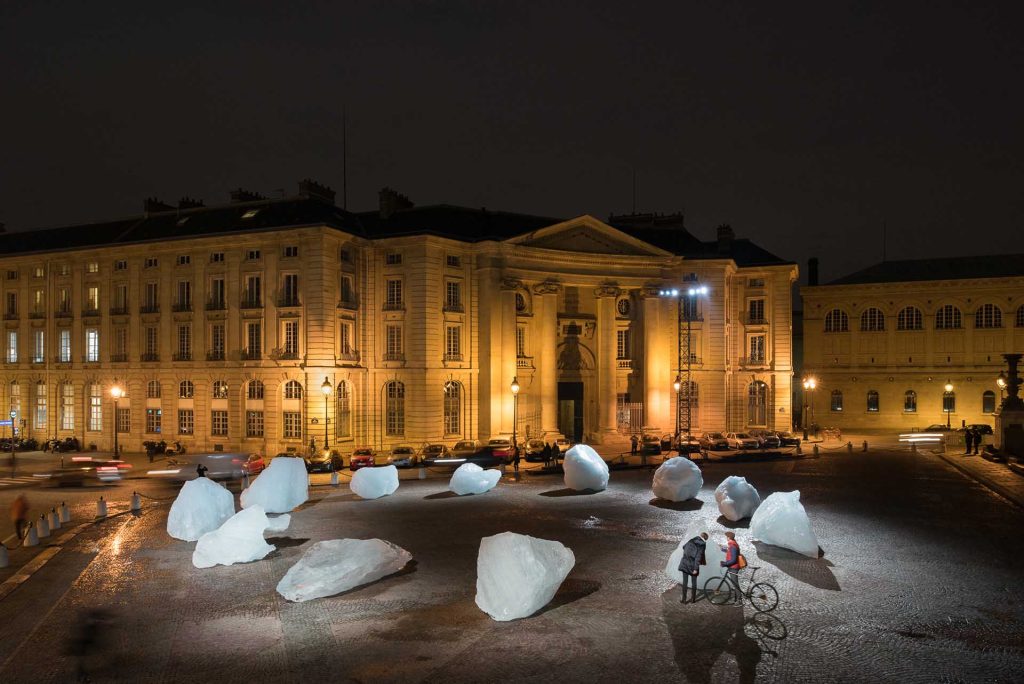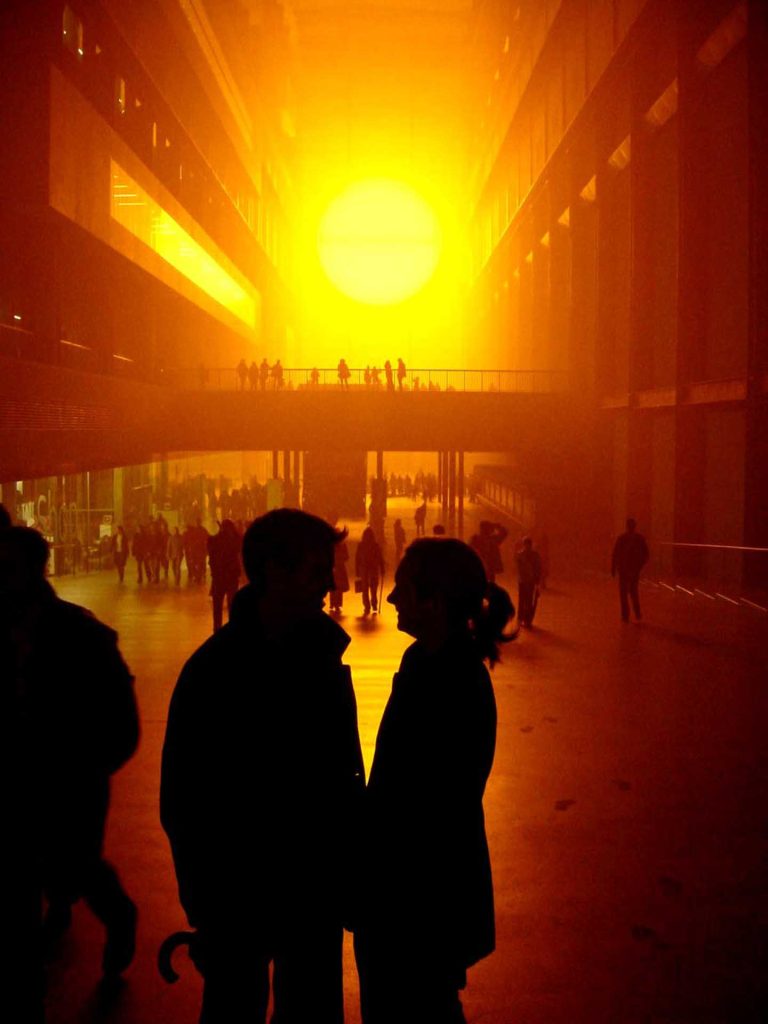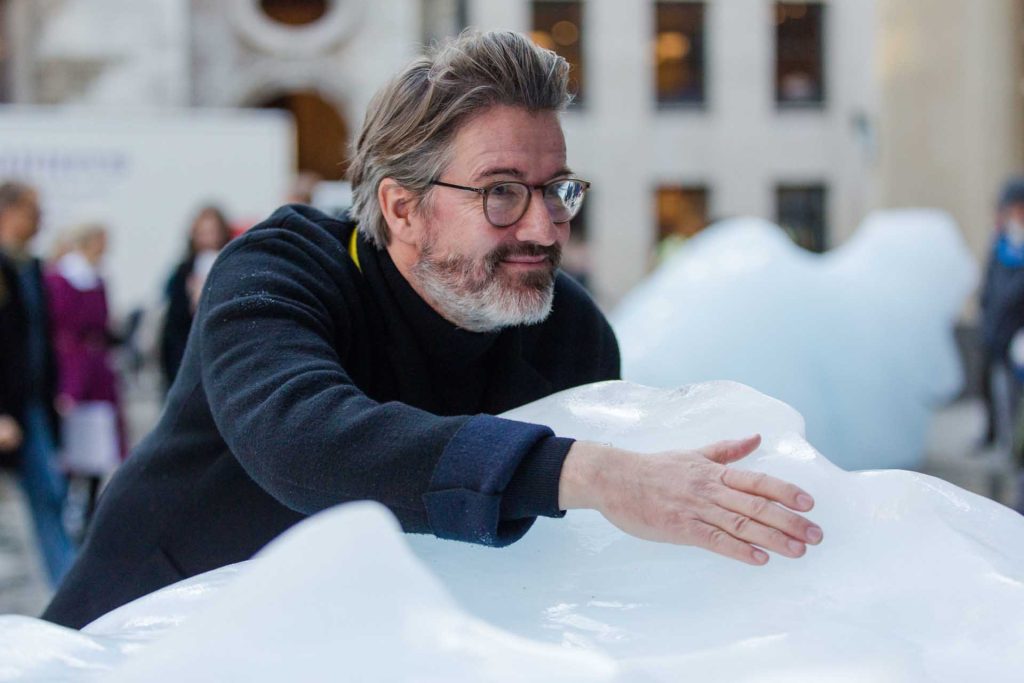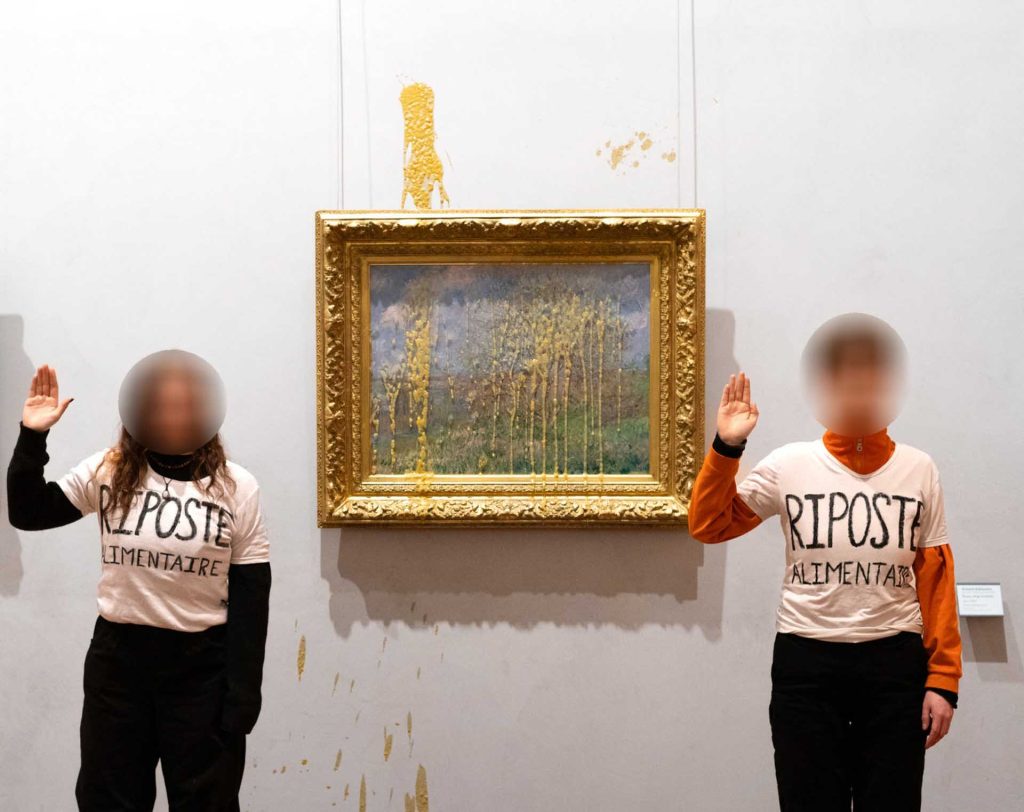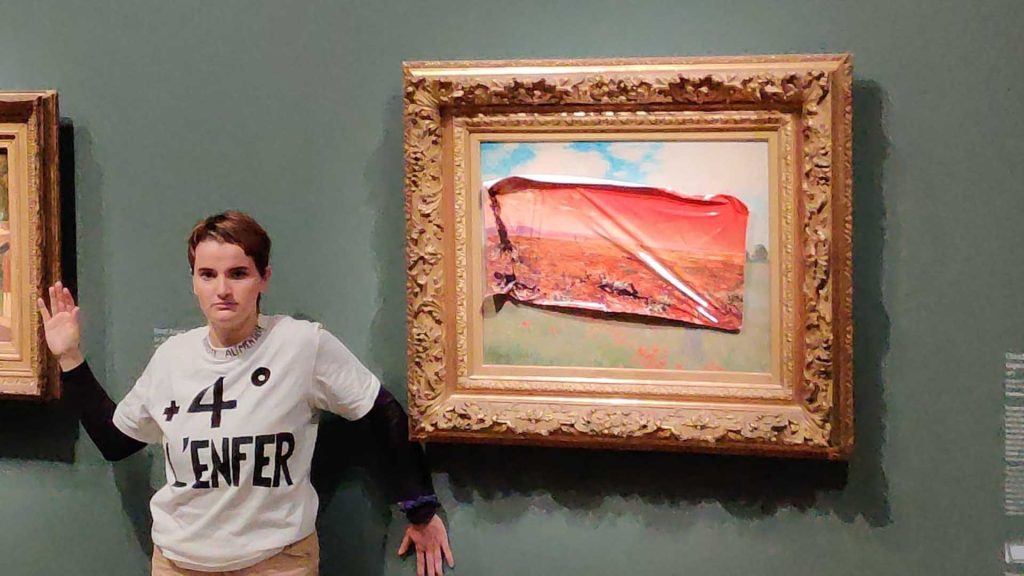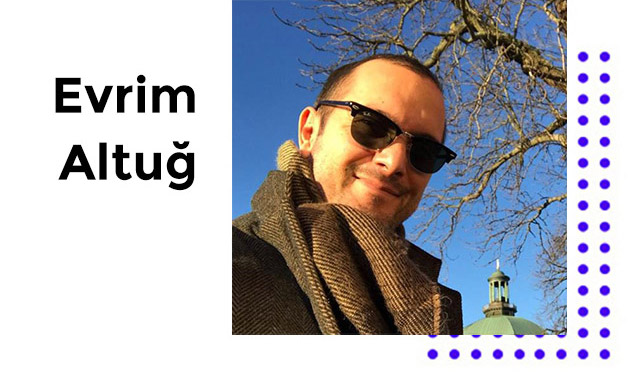
Climate change and political crises have increasingly become significant subjects of expression and protest in contemporary art. International projects and civic activist actions that integrate art history are showcased through world-renowned masterpieces and contemporary art examples. This trend is quickly assigned symbolic value in the art market, influencing the cultural economy’s balance sheet with both positive and negative impacts.
The customs of producing and exhibiting visual arts continue to adhere to both material and spiritual schedules, often perpetuating classism and enabling access according to individual aspirations.
Like a hellish folk dance.
Amidst the turmoil of colonialism, imperialism, neoliberalism, and globalization, the voices of totalitarianism victims crying out against inequality and for life challenge the top headlines almost every hour.
Under these distorted conditions, structural and mental transformations, along with forms of protest in the name of climate change, make artistic production more actionable, urgent, authentic, and necessary.
For example: The action-piece “Ice Watch” (https://olafureliasson.net/icewatchcopenhagen/) performed 10 years ago (!) in the square overlooking the Town Hall in Copenhagen, the capital of Denmark, by Olafur Eliasson, whose works are currently on view (permanently and temporarily) at Istanbul Modern (https://www.istanbulmodern.org/sergi/guncel/olafur-eliasson-senin-beklenmedik-karsilasman).
This form of “transfer” or translation repeatedly demonstrates the intricate yet immense impact of the connection between art and life.
With this example of a civil society “Happening” (https://www.tate.org.uk/art/art-terms/h/happening), a form of performance, Eliasson and geologist Minik Rosing staged on October 26 and 29, Eliasson pays tribute to the UN Intergovernmental Panel on Climate Change’s Fifth Assessment Report, an alarming document on global warming.
As part of the project, 12 large blocks of ice from the Greenland ice sheet were collected from a fjord outside Nuuk and shipped to Copenhagen. There, they were displayed “in the shape of a clock” as a nod to the global alarm sounded by the UN report.

The pieces of ice that did not completely melt after three days were donated to schools around Copenhagen. Eliasson and Rosing describe their work as a “Wake Up Call”: “Sea levels are rising. Temperatures are rising. Climate change is a reality.”
Commenting on the issue at the time, Environmental Engineer Dekila Chungyalpa said:
“To restart the climate change dialogue, which is currently driven by politicians and the media, we urgently need public engagement. We must break the impasse where governments dictate how and when to address climate change, because it is clearly too little, too late.
We must recognize that the people are a group of individuals, not an ordinary mass of people. There are many factors that drive individuals to make decisions: Faith, love, hope for a better future, risk reduction, inspiration, a sense of belonging.
This is an issue that is not owned by governments, politicians, scientists, NGOs and the media. It belongs to all of us and we must become comfortable speaking this language.
For me, art is the expression of our love for and fear of the world – our attempts to capture and anticipate the patterns, colors, and movements we see around us.
Many of us are horrified by climate change and frozen with confusion about what we need to do to address it.
The artists channel this energy into a resolute roar, urging all of us, wherever we are, to do our part in combatting climate change with whatever means we possess.
Ultimately, hope and courage are essential to effecting change, and art serves as a beacon of light in this endeavor.”
In essence, it is humanity’s struggle for survival and dominance within nature, both shaping and being shaped by these events, that both creates and erases the delicate pages of history.
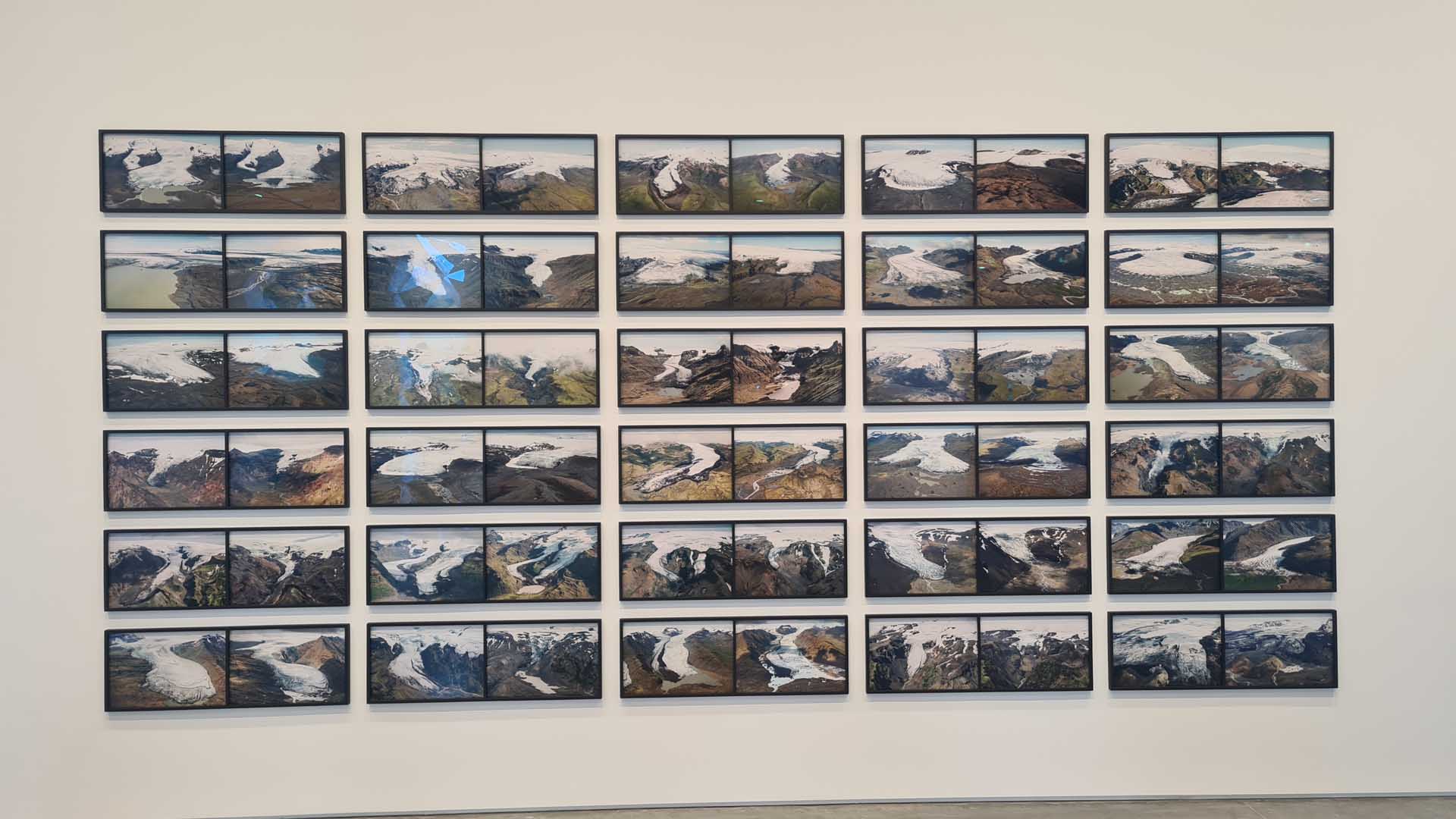
When we view art history through a lens of “recycling”, doesn’t it appear that the Impressionist movement (https://artsandculture.google.com/entity/%C4%B0zlenimcilik/m03xj1?categoryId=art-movement) before us is grappling with similar challenges?
It’s a movement that rejected the constraints of the “academy” to embrace a direct connection with nature, seeing it as its “teacher”, along with human nature. It focused on depicting scenes from everyday life, whether on the streets, in meadows, or on mountains, capturing them with a raw, unfiltered perspective.
It’s a social and revolutionary movement that seeks to integrate the image with its origins and demise, advocating for both class inclusivity and interpretive diversity. A stream of consciousness that derives its immortality from its mortality.
Likewise, doesn’t the “unruly” yet indispensable “Post-Impressionism” (https://artsandculture.google.com/entity/ard-%C4%B0zlenimcilik/m015xrq) movement that followed also contribute to art history with similar challenges?
By exercising all the rights of perception, interpretation, and production that Impressionism pioneered in favor of revealing the essential nature of things, Post-Impressionism pushed further, embracing the freedom to offer entirely new interpretations of life, humanity, and the world. It triumphed in fostering empathetic awareness of the “other” and asserting the intrinsic value of both people and objects.
As a meta-reading, Olafur Eliasson’s 2003 installation “The Weather Project” (https://olafureliasson.net/artwork/the-weather-project-2003/) is also notable for the visual, civic, and environmental impact it made at Tate Modern, originally a power station transformed into a museum.
As a meta-reading, Olafur Eliasson’s 2003 installation “The Weather Project” is also remembered for the visual, civic, and environmental imprint it left on the Tate Modern, which was once a source of energy production and was later converted into a museum. This is clear in many of his works at Istanbul Modern. The more curious, active, cultured, and patient the viewer is, the more the artist’s works affect them.
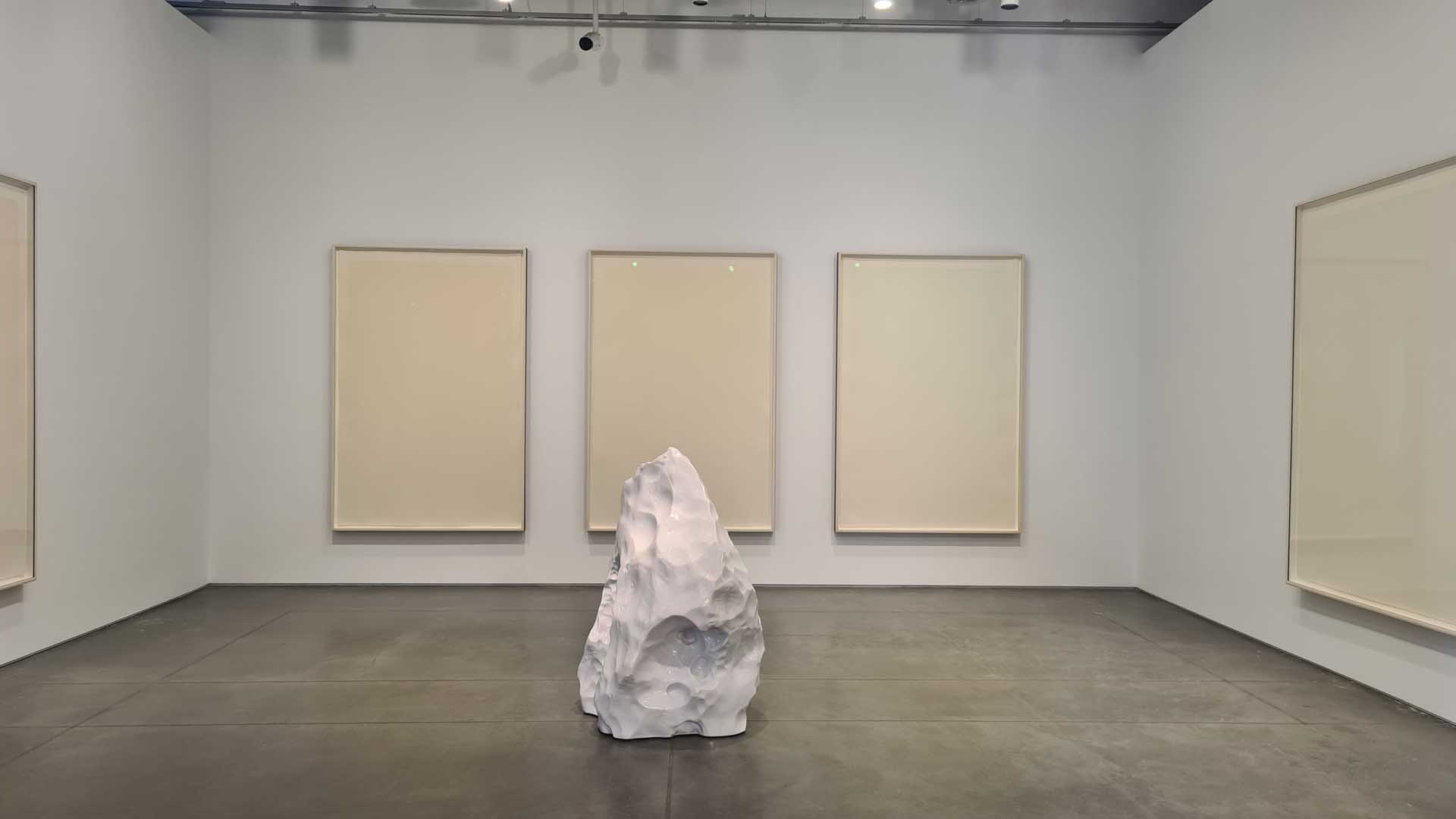
In contrast, “Land Art” (https://artsandculture.google.com/entity/arazi-sanat%C4%B1/m018q2s?categoryId=art-movement) and art movements like “Ecovention,” claimed to have emerged in the early 2000s, continue to generate ongoing agendas with their mortal and humble approach.
The “glimmers of intelligence” in these productions and actions—whether accompanied by diplomas or not—place them on the brink of becoming serious and potentially destructive instances of violence. However, the awareness and collective consciousness fostered by these actions, the potential power within this delicate balance, elevate the work beyond mere violence, making it monumental in the annals of art history, perfecting it, making it akin to the impact of a God particle (https://www.bbc.com/turkce/haberler/2013/03/130314_higgs_parcacigi).
Amidst the so-called civilized detritus of humanity, culture once more confronts it with its most compassionate form, offering healing saliva in defiance. Just as Piero Manzoni (https://www.tate.org.uk/art/artworks/manzoni-artists-shit-t07667) canned art, value, permanence, and memory in their most critical form, transforming them into “artifacts” with his own excrement.
Almost all stereotypes of opinion, education, and production that art embodies from an “Islamic stance” are either held hostage or questioned by activist-citizens (https://ripostealimentaire.fr/ ) or “professional artists” themselves, who seize the discourse under the guise of urgency, subjecting revered masterpieces to creative violence.
When we delve into the history of art (giving archaeology its due), we find ourselves surrounded by a wealth of troubled, ‘meaningful’ dirt, waste, or ruins, all regarded with admiration and passion.
Because they still, and fortunately, all mean something:
Climate activists have recently targeted masterpieces displayed in major museums across the US and Europe. They are mobilizing public opinion through social media and public space actions aimed at shaming museums, brands, signatures, and cultural institutions implicated in environmentally harmful sponsorships.
As a recent example, two environmental activists made headlines when they entered the Louvre Museum in Paris on January 28, 2024, and threw soup (https://www.youtube.com/watch?v=UnB8WRDq48g) at Leonardo da Vinci’s global icon, the “Mona Lisa”, which is still, and fortunately, remembered.
During their actions, activists are raising a vital question in a screaming way:
“Which is more important? Art or the right to a healthy and sustainable diet? Our agricultural system is sick.”
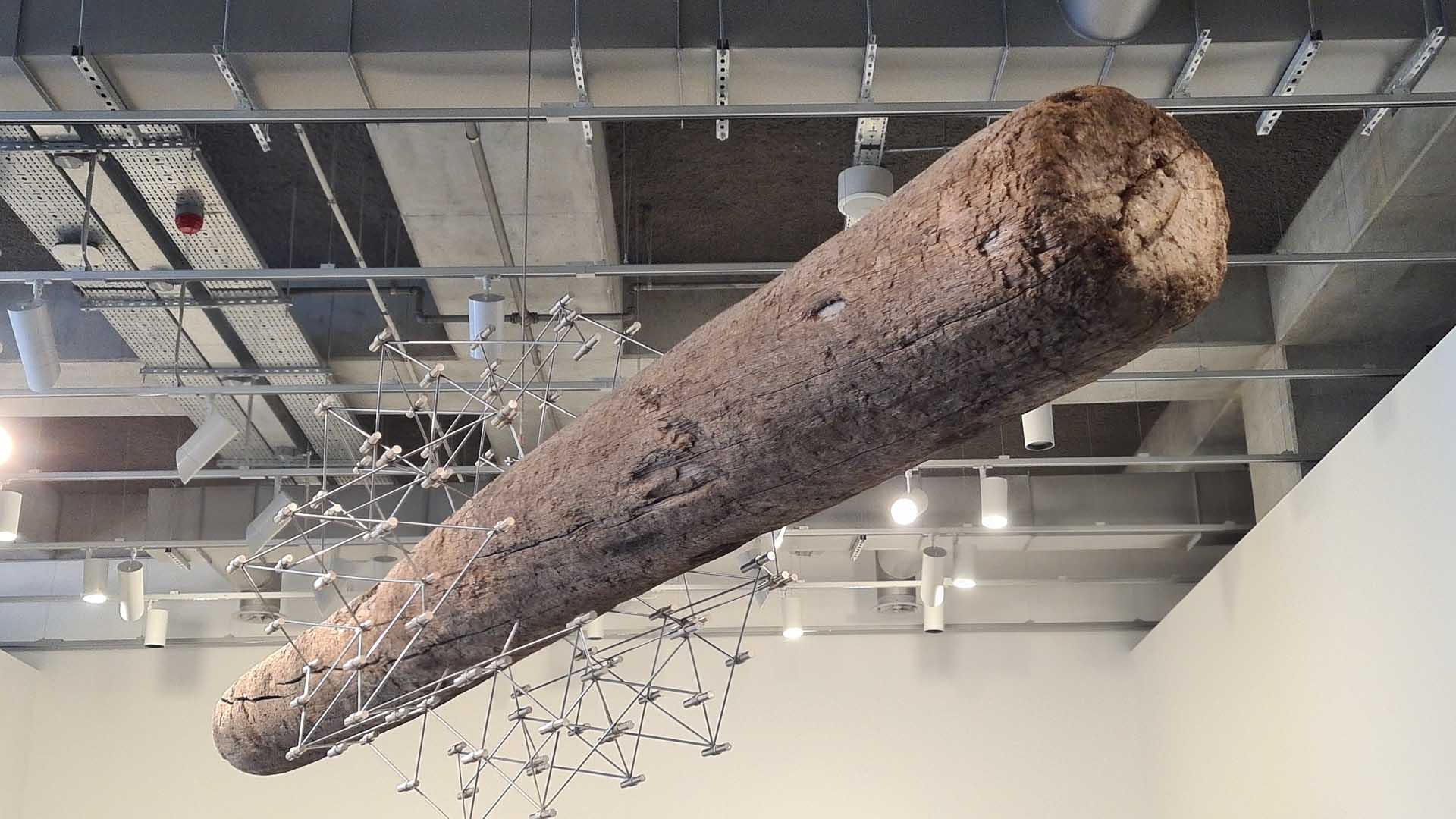
The “agricultural system” criticized by activists transforms the nausea of the world’s “cultural system”, derived from agriculture—Latin ‘Cultura’, meaning ‘culturing’—into symbolic vomit.
It also confronts the system with itself. It messes it up left and right, inside out. The Mona Lisa is still clean even though it’s dirty. That’s because the work, like so many others, is being viewed through a solid glass as a high-security measure. In fact, almost no one is even aware of the situation, except for this “voluntary failure”.
Even at its most authentic, the truth, as a representation, affects us in ways that are both distorting and disruptive.
The “Stop the Oil” activists are also known for throwing tomato soup (https://www.youtube.com/watch?v=BN-C5N60u_M) at Vincent Van Gogh’s painting “Sunflowers” at the National Gallery in London, England.
But the same Van Gogh, with his own social awareness, has already been making his mark on art history for over a century as the most honest, direct, and unflinching artist when it comes to poverty.
Similarly, those activists also threw mashed potatoes at a painting by French artist Claude Monet from the “Les Meules” (The Stacks of Wheat) series, exhibited at the Barberini Museum in Potsdam, Germany.
The activists’ use of cans, famously associated with Andy Warhol, the Polish-American icon who critiqued consumer society through his ‘original prints’, adds another layer of symbolic significance.
Another similar protest took place at the 5,000-year-old Stonehenge monument. Two protesters sprayed the monumental rocks with orange paint ahead of the UK election (UK Climate Protesters Cover Stonehenge In Orange Paint Ahead Of Election | HuffPost Latest News). The protesters, 21-year-old Niamh Lynch and 73-year-old Rajan Naidu, are members of Just Stop Oil, a group that wants the British government to establish a legally binding treaty to stop the extraction and burning of oil, gas and coal alongside other nations. Just Stop Oil is demanding concrete action to “phase out” fossil fuels within a six-year period.
In a sense, masterpieces displayed in what are essentially supermarket-like museums resemble canned goods, ready to be consumed at any moment, waiting for their expiration date (TETT – Recommended consumption date).
As you may recall, in early June, a climate activist in France, affiliated with the Riposte Alimentaire initiative I mentioned earlier, affixed a picture onto a painting by the world-renowned French artist Claude Monet to highlight global warming.
The footage shared on the initiative’s social media account shows the climate activist carrying out an individual action at the Orsay Museum in Paris. The action was to highlight the damage caused by global warming.
The activist affixed a picture onto Monet’s ‘Field of Poppies,’ depicting the potential landscape that could emerge if global temperatures rose by 4 degrees. The activist then removed their jacket and pressed their hand against the wall where the painting was displayed.

As reported by Anadolu Agency at the time, the climate activist, wearing a white T-shirt with the words “+4 degrees Hell” written on it, declared during his speech at the museum, “This nightmarish vision before us is what awaits if no alternative is proposed. Hell awaits us at plus 4 degrees.”
The activist called for urgent action on the global “climate emergency” and advocated for food security for all.
According to a statement on Riposte Alimentaire’s social media account, the picture affixed to Monet’s painting depicted how a poppy field might appear in the year 2100. The statement noted that in a scenario where global temperatures rise by 4 degrees Celsius by 2100, Europe would resemble the Sahara Desert, and there would be no snow in the Himalayan Mountains.
“No one wants to live in such a world,” the statement said, adding that agriculture is responsible for 21 percent of greenhouse gas emissions worldwide. According to Ouest-France newspaper, an environmentalist protesting at the Orsay Museum was detained.
These actions, which seize art history hostage, are not limited to climate or energy-themed resistance projects alone. For instance, on Tuesday, June 11, activists from the Animal Rising initiative, an animal rights movement, affixed posters from the Wallace and Gromit animated film series over the first official portrait of King Charles III of England in London, England (https://tr.euronews.com/kultur/2024/06/12/hayvan-haklari-aktivistleri-kral-3-charlesin-portresini-hedef-aldi).
Activists claim to have “redecorated” the portrait by Jonathan Yeo at the Philip Mould Gallery in London, which was unveiled last month.
The activists placed a poster featuring the face of Wallace’s character over the British monarch’s face and added a speech bubble to the portrait.

The speech balloon holds the remarkable expressions, “No cheese, Gromit. Look at the cruelty on Royal Society for the Prevention of Cruelty to Animals (“RSPCA”) farms!”
“As King Charles is a huge fan of ‘Wallace and Gromit’, we couldn’t think of a better way to draw his attention to the horrific scenes on RSPCA farms,” the activists said in a statement.
If we look closer, the memories and content of these physical and abstract materials are intriguingly ‘merged and reconciled’ with the narratives and protests of the selected works.
It’s as if these spirited individuals of Generation XYZ are nudging the masterpieces that have slumbered in museums, urging them, “come on, wake up, it’s time to go”, as their narratives pass through them one by one.
When the tables are turned, the art market and the global museum landscape, which manipulate all these “values” with their astute observations, applaud -and demand applauding- those who tell or collect the most authentic stories—aligned, of course, with their own cultural policies.
With a so-called credibility, they put their own history in the “deep freeze”.
Amidst this celebratory clamor, auctioneers and collectors spare no effort in claiming any genuine value, whether dormant or alive, often vying with each other as if devoid of guilt.
Conscience, sincerity, and authenticity become commodities in a competitive cycle for those who consume them.
Art persists as a life vest amid rising fundamentalism, nationalism, sexism, and violence—a cross-border passport for cultural diplomacy and a space for humanity’s confessions.
The artists who previously organized the 12th Istanbul Biennial with Jens Hoffmann (https://bienal.iksv.org/i/assets/bienal/document/12B_JENS-HOFFMAN-ADRIANO-PEDROSA.pdf) under the theme “’Untitled”, organized by IKSV, and participated in the last Venice Biennial (https://www.labiennale.org/en) under the theme “We Are All Strangers”, curated by Adriano Pedrosa, continue to bear witness to these societal pains and struggles.
“National Pavilions” are often attempted to be transformed into whitewashing tools by private and official supporters in the face of history, yet at the last moment, everyone quickly shifts to praising the “other” within themselves.
What Adriano Pedrosa and Jens Hoffmann said at the 12th Istanbul Biennial (https://bienal.iksv.org/i/assets/bienal/document/12B_JENS-HOFFMAN-ADRIANO-PEDROSA.pdf) remains relevant today, whether they are acting as activists or artists.
“Our goal is to encourage the audience to shift from passive receivers to active interpreters.”
If Pedrosa’s assertion in Venice, “We are all strangers,” holds true, there may be no harm in metaphorically “taking hostage”—without physical harm—any of the world’s masterpieces that we feel estranged from.
The urgency of the situation is just that.
The issue reveals itself with sincerity depending on whether you focus on the masterpiece or the latest/contemporary work.


